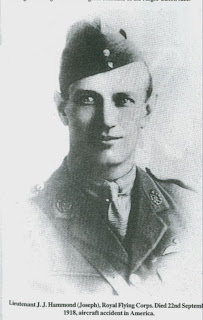He was awarded the Military Medal in August 1918, report below:
London Gazette, 24 January 1919, p1254, Rec No 2288: On 26th August 1918 near Baupame. Whilst the Battery was taking part in a barrage it was subjected to exceptionally heavy shelling by the enemy. This N.C.O. showed great coolness and bravery throughout, and when a direct hit on an ammunition dump set it burning, he, at great risk to himself, succeeded in extinguishing the fire, and getting the gun into action.
His family would have been very proud of their brave son. Sadly the next news they most likely received about him was news of his death from disease on the 18 October 1918. I found a moving memorial poem inserted into the Hawera & Normanby Star on the 26 October 1920 (Papers Past) by Bombardier Cadman's parents.
I remember the day when the cable came
And I knew that his race was run;
And nothing was left but an honoured name,
And the grave of our brave dear one.
He went with the hopes of returning,
along with his comrades so brave;
But with many a hero he is sleeping
Where his loved ones can never go near.









